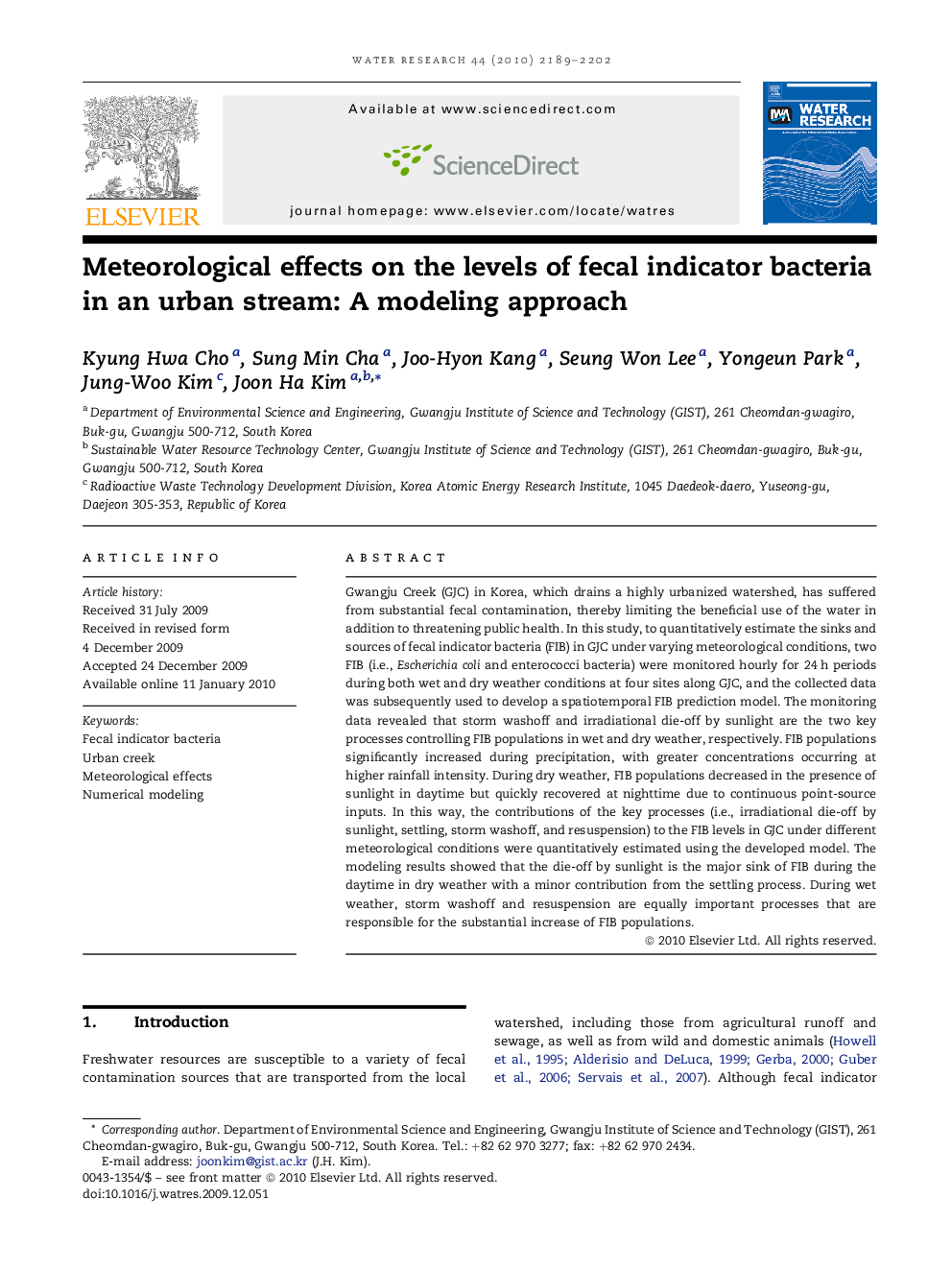| کد مقاله | کد نشریه | سال انتشار | مقاله انگلیسی | نسخه تمام متن |
|---|---|---|---|---|
| 4484029 | 1316907 | 2010 | 14 صفحه PDF | دانلود رایگان |

Gwangju Creek (GJC) in Korea, which drains a highly urbanized watershed, has suffered from substantial fecal contamination, thereby limiting the beneficial use of the water in addition to threatening public health. In this study, to quantitatively estimate the sinks and sources of fecal indicator bacteria (FIB) in GJC under varying meteorological conditions, two FIB (i.e., Escherichia coli and enterococci bacteria) were monitored hourly for 24 h periods during both wet and dry weather conditions at four sites along GJC, and the collected data was subsequently used to develop a spatiotemporal FIB prediction model. The monitoring data revealed that storm washoff and irradiational die-off by sunlight are the two key processes controlling FIB populations in wet and dry weather, respectively. FIB populations significantly increased during precipitation, with greater concentrations occurring at higher rainfall intensity. During dry weather, FIB populations decreased in the presence of sunlight in daytime but quickly recovered at nighttime due to continuous point-source inputs. In this way, the contributions of the key processes (i.e., irradiational die-off by sunlight, settling, storm washoff, and resuspension) to the FIB levels in GJC under different meteorological conditions were quantitatively estimated using the developed model. The modeling results showed that the die-off by sunlight is the major sink of FIB during the daytime in dry weather with a minor contribution from the settling process. During wet weather, storm washoff and resuspension are equally important processes that are responsible for the substantial increase of FIB populations.
Journal: Water Research - Volume 44, Issue 7, April 2010, Pages 2189–2202